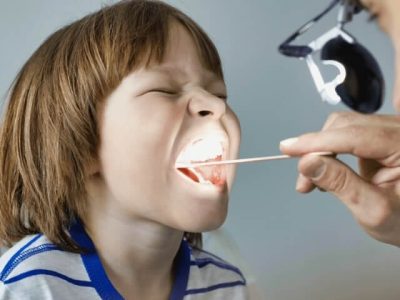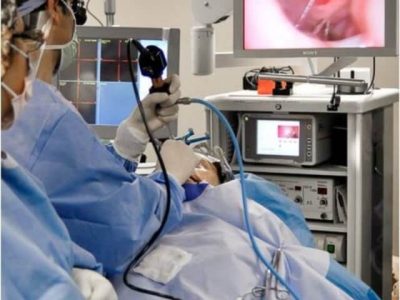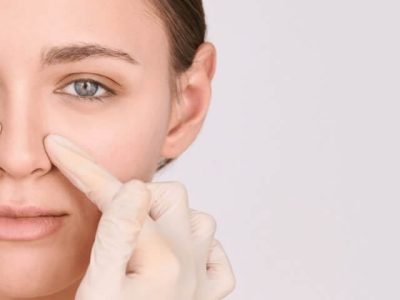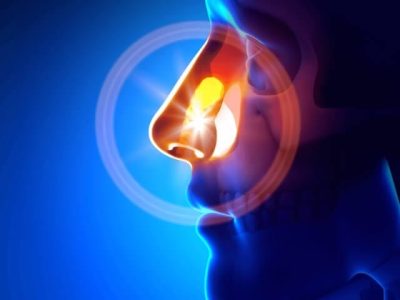Ear Nose Throat (ENT)
Ear, Nose, and Throat (ENT) treatments encompass a wide range of medical care focused on the health and function of the head and neck region. These treatments address common issues such as nasal congestion, sinus infections, hearing loss, ear infections, and throat disorders, all of which can significantly impact daily life and well-being. ENT specialists use advanced diagnostic tools and modern treatment methods to provide personalized care that restores essential functions like breathing, hearing, and swallowing. By targeting both acute and chronic conditions, ENT care improves overall quality of life while ensuring patient comfort and safety throughout the treatment process.
Frequently Asked Questions (FAQ)
WHY DO ADENOIDS ENLARGE?
Adenoids are small, soft masses of lymphatic tissue located behind the nose, near the roof of the mouth. They play a role in the body’s immune defense system during early childhood by trapping harmful bacteria and viruses entering through the nose. However, in some cases, adenoids can become enlarged and may lead to a variety of symptoms and health issues.
IS ENLARGED ADENOID A PROBLEM?
While mild enlargement is common and often resolves on its own, significantly enlarged adenoids can block the airway, leading to mouth breathing, snoring, restless sleep, and even sleep apnea. In some cases, enlarged adenoids can interfere with normal speech, swallowing, and ear function, especially in young children between the ages of 3 and 8. If your child has persistent nasal congestion, frequent ear infections, or disturbed sleep, it may be time to consult an ENT specialist. With the right diagnosis and treatment plan whether medical or surgical most patients experience significant relief and improved quality of life.
MEDICAL TREATMENTS USED IN ADENOID HYPERTROPHY MANAGEMENT
Treatment for adenoid-related conditions depends on the severity of the symptoms and the impact on the patient’s quality of life. Mild cases may be managed with medications to control infection and inflammation.
Common Medications for Adenoid Hypertrophy
- Nasal Corticosteroids
Nasal steroid sprays such as fluticasone, mometasone, or budesonide are frequently prescribed to reduce inflammation and swelling of the adenoids. These medications help open nasal passages, improve breathing, and decrease related symptoms like nasal congestion and postnasal drip. - Antihistamines
When allergies contribute to adenoid enlargement, antihistamines like cetirizine, loratadine, or fexofenadine can help by reducing allergic inflammation. These medications alleviate sneezing, runny nose, and itching, which can indirectly reduce adenoid size and associated discomfort. - Decongestants
Short-term use of nasal or oral decongestants may be recommended to relieve nasal blockage. However, due to the risk of rebound congestion or side effects, these should only be used under medical supervision and for limited durations. - Antibiotics
If a bacterial infection is present or suspected, a course of antibiotics may be necessary to treat the infection and reduce adenoid swelling. It is important to note that antibiotics are not effective against viral infections and should be used appropriately to avoid resistance.
The choice of which medication to use will be determined by your doctor based on your physical examination findings and medical history. These treatments can be used alone or in combination, depending on the individual case.
WHEN IS TONSIL SURGERY (TONSILLECTOMY) RECOMMENDED?
Tonsillectomy, or surgical removal of the tonsils, is typically considered when medical treatments fail or when tonsil problems significantly affect a patient’s health and quality of life. Common indications for tonsil surgery include:
- Recurrent Tonsillitis: Frequent episodes of tonsillitis, usually defined as 5 or more infections per year, that do not respond well to antibiotics.
- Chronic Tonsillitis: Persistent inflammation of the tonsils causing ongoing throat discomfort and other symptoms despite medical treatment.
- Obstructive Sleep Apnea: Enlarged tonsils can block the airway during sleep, leading to breathing difficulties, snoring, and poor sleep quality.
- Difficulty Breathing or Swallowing: Significantly enlarged tonsils may cause breathing problems or make swallowing difficult.
- Tonsil Stones (Tonsilloliths): When tonsil stones cause frequent discomfort, bad breath, or infections that do not improve with conservative care.
Ultimately, the decision for tonsil surgery is made by an ENT specialist after a thorough evaluation of symptoms, medical history, and physical examination.
WHAT CAUSES MIDDLE EAR INFECTIONS?
A middle ear infection, also known as otitis media, is an infection or inflammation of the space behind the eardrum. Middle ear infections are often caused by bacteria or viruses, usually following a cold, sinus infection, or upper respiratory illness. Swelling can block the Eustachian tube, trapping fluid in the middle ear and creating an environment for infection.
WHAT IS THE DIFFERENCE BETWEEN ACUTE OTITIS MEDIA AND SEROUS OTITIS MEDIA?
Acute Otitis Media (AOM) and Serous Otitis Media (SOM), also known as Otitis Media with Effusion, are both conditions that affect the middle ear, but they differ significantly in cause, symptoms, and treatment.
Acute Otitis Media (AOM) is an active infection of the middle ear, most commonly caused by bacteria or viruses. It often develops suddenly and presents with noticeable symptoms such as ear pain, fever, irritability, and sometimes fluid drainage from the ear. AOM involves infection and inflammation and it usually requires treatment with antibiotics, along with pain relievers to manage discomfort. If left untreated, AOM can lead to complications like eardrum rupture or spread of infection.
In contrast, Serous Otitis Media (SOM) is not an directly an infection. It occurs when fluid accumulates behind the eardrum due to Eustachian tube dysfunction, which often follows a cold, upper respiratory infection, or allergic reaction. The fluid in SOM is clear or usually non infected, and the condition usually does not cause fever or acute ear pain. Instead, patients may notice a sensation of fullness in the ear, muffled hearing, or sometimes balance issues.
Treatment for SOM is usually conservative at first. In many cases, the fluid resolves on its own over a few weeks. However, if the condition persists for longer than 3 months, or if it causes significant hearing loss particularly in children during speech development years your ENT specialist may recommend the placement of ventilation tubes to drain the fluid and restore normal hearing.
WHAT ARE THE VENTILATION TUBES?
Ventilation tubes also known as tympanostomy tubes, ear tubes, or grommets are tiny cylindrical devices inserted into the eardrum (tympanic membrane) to help drain fluid from the middle ear and equalize pressure. They are commonly used to treat chronic otitis media with effusion or recurrent ear infections, especially in children.
WHY ARE VENTILATION TUBES USED?
These tubes allow air to enter the middle ear and prevent the accumulation of fluid behind the eardrum. They help:
- Improve hearing
- Reduce the frequency of ear infections
- Prevent complications such as speech delays in children
Relieve symptoms like ear fullness or pressure
TYPES AND DURATRION IN THE EARDRUM OF VENTILATION TUBES
There are two main types of ventilation tubes, each designed for different durations:
- Short-Term Tubes
- Also known as standard or grommet tubes
- Made of soft plastic or silicone
- Typically remain in the eardrum for 6 to 12 months
- Most often fall out on their own as the eardrum heals and pushes the tube out naturally
- Used in most routine cases, especially in children
- Long-Term Tubes
- Also called T-tubes or durable tubes
- Larger and more stable in shape (often T-shaped)
- Made from materials like fluoroplastic or titanium
- Designed to stay in the eardrum for 12 to 24 months or longer
- May need to be manually removed by an ENT specialist if they do not fall out on their own
- Used in cases of more severe or chronic middle ear disease, or after multiple previous tube placements
HOW DOES A DEVIATED SEPTUM AFFECT THE UPPER RESPIRATORY TRACT?
A deviated septum can disrupt normal airflow through the nose, leading to chronic nasal congestion. This may cause mouth breathing, dryness, frequent nosebleeds, snoring, increased risk of infections in the upper respiratory tract such as sinusitis and sometimes headaches..
WHAT TREATMENT OPTIONS ARE AVAILABLE FOR A DEVIATED SEPTUM?
Mild symptoms may be managed with medications such as nasal steroids, antihistamines, or decongestants. For significant blockage or recurrent infections, a surgical procedure called septoplasty may be recommended to correct the deviation and improve airflow.
WHAT IS THE RELATIONSHIP BETWEEN NASAL SEPTUM DEVIATION AND SINUS INFECTIONS?
A deviated septum can block sinus drainage pathways, leading to mucus buildup and increasing the risk of chronic or recurrent sinus infections in the upper respiratory tract. In addition, it may also cause your allergic sinus conditions to progress in a more exaggerated manner
WHAT CAUSES TURBINATE HYPERTROPHY?
Some common causes include:
- Chronic allergies (allergic rhinitis)
- Repeated sinus infections
- Environmental irritants (e.g., smoke, pollution)
- Structural issues such as a deviated septum
- Hormonal changes or certain medications
WHAT ARE THE TREATMENT OPTIONS FOR TURBINATE HYPERTROPHY?
In mild cases, symptoms may improve with lifestyle changes or allergy control. However, persistent hypertrophy often requires medical or surgical treatment.
Non-Surgical Treatment Options:
- Saline nasal rinses
- Nasal steroid sprays
- Decongestants (short-term use only)
- Antihistamines
- Allergy management
Surgical Treatment Options:
Surgery is considered when symptoms persist despite medical treatment. It may also be recommended if the condition significantly affects breathing or sleep quality.These procedures aim to reduce the size of the turbinates while preserving their natural function.
- Radiofrequency reduction (RFA)
- Laser Surgery: .
- Submucosal resection
- Microdebrider-assisted turbinoplasty
- Partial turbinectomy
WHAT IS THE RECOVERY LIKE AFTER TURBINATE SURGERY?
Most turbinate reduction surgeries are performed under local or general anesthesia. Discomfort is usually minimal and well-managed with pain relief medications postoperatively.
Recovery varies depending on the procedure. Most patients return to normal activities within a one day. Full healing may take a 2 weeks, during which nasal rinses and follow-up care are important.
IS THERE A DIFFERENCE BETWEEN SEASONAL AND PERENNIAL ALLERGIC RHINITIS?
Allergic rhinitis is an immune response of the nasal mucosa to allergens. It typically presents with symptoms such as sneezing, runny nose, nasal congestion, itching, and watery eyes. Allergic rhinitis is classified into two main types: seasonal and perennial. These two forms differ in terms of their causes and the time of year they occur.
Seasonal Allergic Rhinitis (Hay Fever)
Seasonal allergic rhinitis occurs mainly during spring, summer, and fall. The most common triggers are airborne pollens that are present during specific times of the year. Tree pollens are usually prevalent in spring, grass pollens in early summer, and weed pollens in late summer and fall.
Symptoms typically appear only during the pollen season and may include:
- Sneezing
- Nasal congestion
- Runny nose
- Itchy nose, eyes, or throat
- Watery eyes
These symptoms are often more intense when spending time outdoors.
Perennial Allergic Rhinitis
Perennial allergic rhinitis occurs year round and is caused by allergens that are constantly present in the environment, especially indoors. Common triggers include:
- Dust mites
- Pet dander
- Mold spores
- Cockroach debris
Symptoms may be milder than those of seasonal rhinitis but tend to be persistent, and often include:
- Chronic nasal congestion
- Postnasal drip
- Mild sneezing and runny nose
- Decreased sense of smell
Unlike seasonal rhinitis, perennial rhinitis is usually triggered by indoor allergens, making symptom control more challenging without environmental adjustments.
CAN CHILDREN OUTGROW ALLERGIC RHINITIS?
Some children may experience a reduction in symptoms over time. Although this does not mean that their allergic tendency has disappeared, the improvement in symptoms is clinically encouraging. However, many continue to carry their allergies into adulthood. In such cases, it may later present as turbinate (nasal concha) disorders or allergic sinusitis.
IS ALLERGIC RHINITIS LINKED TO OTHER HEALTH CONDITIONS?
Yes, allergic rhinitis is often linked to other health conditions, both directly and indirectly. Here’s a clear overview:
Health Conditions Associated with Allergic Rhinitis
Asthma
- One of the most common comorbidities.
- Up to 80% of people with asthma also have allergic rhinitis.
- Both conditions involve airway inflammation and can worsen each other.
Sinusitis (Chronic Sinus Infections)
- Ongoing nasal congestion and mucus buildup can block the sinuses, leading to inflammation or infection.
- Allergic rhinitis increases the risk of both acute and chronic sinusitis.
Otitis Media (Middle Ear Infections)
- Especially in children.
- Allergic inflammation can cause eustachian tube dysfunction, leading to fluid buildup and infection.
Sleep Disorders
- Nasal obstruction can result in poor sleep quality, snoring, or even obstructive sleep apnea (OSA).
- Many patients experience daytime fatigue and poor concentration due to disturbed sleep.
Conjunctivitis (Allergic Eye Inflammation)
- Commonly coexists with allergic rhinitis.
- Causes red, itchy, watery eyes – often referred to as “allergic rhinoconjunctivitis.”
Atopic Dermatitis (Eczema)
- Part of the “atopic triad”: eczema, allergic rhinitis, and asthma.
- These conditions often occur together due to shared allergic or genetic tendencies.
Nasal Polyps
- Chronic inflammation from allergic rhinitis can contribute to polyp formation, especially in long-standing or poorly managed cases.
ARE NOSEBLEEDS DANGEROUS?
In most cases, nosebleeds are not dangerous and are considered a minor, temporary issue. They are especially common during dry weather or after minor irritation to the nose, such as blowing it too hard or picking. Most nosebleeds stop on their own or with simple first aid at home. However, frequent, heavy, or persistent nosebleeds may be a sign of an underlying health condition, such as high blood pressure, a bleeding disorder, or a nasal tumor. If a nosebleed lasts longer than 20 minutes, occurs after a head injury, or is accompanied by other symptoms like dizziness or weakness, medical attention should be sought immediately.
IS IT NORMAL FOR CHILDREN TO HAVE NOSEBLEEDS?
Yes, it is quite common for children to experience nosebleeds, especially between the ages of 3 and 10. Most nosebleeds in children are anterior, meaning they come from the front part of the nose and are usually not serious. Common triggers include dry air, nose picking, minor bumps or falls, allergies, or colds. In most cases, these nosebleeds are harmless and can be easily managed at home. However, if a child has frequent nosebleeds, bleeds that are difficult to stop, or shows signs of bruising or bleeding elsewhere, it’s important to consult a doctor to rule out any underlying issues, such as bleeding disorders or nasal abnormalities.
WHAT’S THE DIFFERENCE BETWEEN ANTERIOR AND POSTERIOR NOSEBLEEDS?
Nosebleeds can be classified into two types based on where the bleeding originates: anterior and posterior.
Anterior nosebleeds are the most common and occur in the front part of the nose, usually from a network of small blood vessels in the nasal septum. These are often caused by dry air, nose picking, minor injuries, or allergies, and are usually easy to manage at home. The blood typically flows out from one or both nostrils.
posterior nosebleeds originate deeper in the nasal cavity, often from larger arteries. These are less common but more serious, as the bleeding is usually heavier and harder to control. Blood from a posterior nosebleed may also flow down the back of the throat, which can make it harder to detect right away. Posterior nosebleeds are more likely to require medical treatment and are often associated with conditions like high blood pressure or bleeding disorders.
IS FREQUENT NOSEBLEEDING A SIGN OF A SERIOUS CONDITION?
Yes, frequent nosebleeds can sometimes be a sign of a more serious underlying condition. While occasional nosebleeds are usually harmless and caused by dry air, allergies, or minor trauma, recurrent nosebleeds may point to issues such as:
- High blood pressure (hypertension)
- Bleeding disorders (e.g., hemophilia, von Willebrand disease)
- Nasal tumors (benign or malignant, though rare)
- Chronic nasal infections or inflammation
- Medication side effects, especially from blood thinners or nasal sprays
If you experience nosebleeds frequently (several times a week or more), or if they occur without an obvious cause, it’s important to see an ENT specialist or your healthcare provider for a proper evaluation.
HOW IS CHRONIC RHINOSINUSITIS DIFFERENT FROM ACUTE SINUSITIS?
The main difference between chronic rhinosinusitis and acute sinusitis is how long the symptoms last and what causes them.
- Acute sinusitis usually develops suddenly, often after a cold or viral infection. It typically lasts less than 4 weeks, and symptoms often improve with basic medical treatment or even on their own.
- Chronic rhinosinusitis, on the other hand, is a long-term condition that lasts 12 weeks or more, despite treatment. It is often caused by a combination of ongoing inflammation, allergies, nasal polyps, or structural issues in the nose, rather than a simple infection.
While both conditions share symptoms like facial pressure, nasal congestion, and sinus pain, chronic rhinosinusitis is persistent, and may require more comprehensive treatment, including medications or surgery.
IS CHRONIC RHINOSINUSITIS CONTAGIOUS?
No, chronic rhinosinusitis (CRS) is not contagious. It is a long-term inflammatory condition of the sinuses, not a viral or bacterial infection that spreads from person to person. However, acute sinus infections often caused by viruses like the common cold can be contagious and may contribute to the development of chronic inflammation in some individuals.
Chronic rhinosinusitis is usually the result of factors such as allergies, nasal polyps, a deviated septum, immune system issues, or long-standing irritation, rather than direct infection transmission. However, during acute flare-ups, infectious features may also be present, and treatments targeting these may be administered
CAN CHRONIC RHINOSINUSITIS AFFECT MY SENSE OF SMELL?
Yes, chronic rhinosinusitis can significantly affect your sense of smell. Ongoing inflammation and swelling in the nasal passages can block airflow to the olfactory receptors—the part of your nose responsible for detecting odors. In addition, thick mucus buildup and the presence of nasal polyps can further reduce your ability to smell.
Many patients with chronic rhinosinusitis report a reduced or complete loss of smell (a condition known as hyposmia or anosmia). Treating the underlying inflammation with medications or, in some cases, sinus surgery, can help restore or improve the sense of smell over time.
IS SURGERY ALWAYS NECESSARY IN CHRONIC SINUSITIS?
No, surgery is not always necessary for chronic sinusitis. Many patients respond well to medical treatments such as nasal corticosteroids, saline rinses, antibiotics (if infection is present), and allergy management. Surgery, like functional endoscopic sinus surgery, is typically considered only when symptoms persist despite appropriate medical therapy or if anatomical issues (like nasal polyps or a deviated septum) prevent proper sinus drainage.
WHAT IS FUNCTIONAL ENDOSCOPIC SINUS SURGERY (FESS)?
Functional Endoscopic Sinus Surgery, or FESS, is a minimally invasive surgical procedure used to treat chronic sinusitis and other sinus problems. During FESS, an ENT surgeon uses a thin, flexible tube with a camera called an endoscope to view and access the sinuses through the nostrils. The surgeon then removes blockages such as inflamed tissue, nasal polyps, or bone obstructions to improve sinus drainage and ventilation.
FESS helps relieve symptoms like nasal congestion, facial pain, and recurrent infections when medical treatments have not been effective. The procedure typically results in faster recovery and less discomfort compared to traditional sinus surgery.
HOW IS THE RECOVERY AFTER ENDOSCOPIC SINUS SURGERY?
Recovery usually takes about 1 to 2 weeks, but most people can return to normal activities within a few days. Most patients experience mild discomfort, nasal congestion, and some nasal drainage or minor bleeding for a few days to a week after the procedure. Pain is usually not the main concern for the patient, and most of the time, painkillers are not even necessary. However, during the first two days after surgery, you may experience a feeling of fullness in your face similar to having a cold, which is the cause of your discomfort.
You may need to use saline nasal sprays or rinses regularly to keep the nasal passages clean and promote healing. Your doctor might also prescribe medications like nasal steroids or antibiotics to reduce inflammation and prevent infection.
Most people can return to normal daily activities within a few days, but strenuous exercise and heavy lifting should be avoided for at least 1 to 2 weeks. Full healing of the sinuses may take several weeks, during which follow-up visits with your ENT specialist are important to monitor progress.
DO I NEED TO STAY IN THE HOSPITAL FOR ENDOSCOPIC SINUS SURGERY?
In most cases, endoscopic sinus surgery is performed as an outpatient procedure, meaning you can go home the same day after a few hours of observation. Hospital stays are rarely required unless there are specific medical reasons or complications.
DO NASAL POLYPS AND CHRONIC SINUSITIS RECUR AFTER ENDOSCOPIC SURGERY? IS THE SURGERY PERMANENT?
Whether nasal polyps recur after surgery depends entirely on the underlying histopathology and the technique used during the operation. Before surgery, it is usually explained if the polyps are likely to recur and, if so, within what timeframe.
In some types of polyp disease, complete healing occurs after surgery, and the polyps do not return.
ARE NASAL POLYPS RELATED TO CHRONIC RHINOSINUSITIS?
Yes, nasal polyps are often closely related to chronic rhinosinusitis. Nasal polyps are soft, non-cancerous growths that develop on the lining of the nasal passages or sinuses due to long-term inflammation. They can block normal sinus drainage, worsen congestion, and contribute to persistent sinus infections.
Many patients with chronic rhinosinusitis have nasal polyps, and their presence can make symptoms more severe. Treating nasal polyps through medications or surgery can be an important part of managing chronic rhinosinusitis effectively.
HOW MANY TYPES OF NASAL POLYPS ARE THERE?
Nasal polyps are generally classified based on their size, location, and underlying cause. While there is no strict number of “kinds,” they can be broadly categorized into many types:
- Allergic (Inflammatory) Nasal Polyps
These are the most common type of nasal polyps and result from chronic inflammation in the nasal mucosa. They are often associated with allergies, asthma, and chronic sinus infections. Allergic polyps typically appear as soft, painless, grape-like growths inside both nasal passages. - Antrochoanal Polyps
Originating from the maxillary sinus (located behind the cheeks), these polyps extend into one side of the nasal cavity. They are more common in children and young adults and usually affect only one nostril. Unlike allergic polyps, antrochoanal polyps tend to be solitary. - Cystic Fibrosis-Related Polyps
Patients with cystic fibrosis often develop nasal polyps at a younger age due to thick mucus secretions and chronic sinus inflammation. These polyps can be more aggressive and recurrent. - Polyps Associated with Aspirin-Exacerbated Respiratory Disease (AERD)
Also known as Samter’s Triad, this condition includes asthma, aspirin sensitivity, and nasal polyps. Polyps in these patients tend to be large, recurrent, and resistant to medical treatment. - Other Rare Types
In rare cases, nasal polyps may be caused by fungal infections or tumors (benign or malignant), which require different treatment approaches and careful diagnosis.
DO NASAL POLYPS AND CHRONIC SINUSITIS RECUR AFTER SURGERY? IS THE SURGERY PERMANENT?
Whether nasal polyps recur after surgery depends entirely on the underlying histopathology and the technique used during the operation. Before surgery, it is usually explained if the polyps are likely to recur and, if so, within what timeframe.
In some types of polyp disease, complete healing occurs after surgery, and the polyps do not return.
HOW IS SNORING DIFFERENT FROM SLEEP APNEA?
Snoring is the sound made when airflow causes the tissues in the throat to vibrate during sleep. It’s usually harmless, although it can be disruptive to others.
Sleep apnea, on the other hand, is a medical condition in which breathing repeatedly stops and starts during sleep. It often involves loud snoring followed by pauses in breathing, gasping, or choking. Unlike simple snoring, sleep apnea can lead to serious health issues such as high blood pressure, heart disease, and daytime fatigue.
IS SLEEP APNEA DANGEROUS?
Yes, sleep apnea can be very dangerous if left untreated.
When breathing repeatedly stops during sleep, it reduces the amount of oxygen your body gets. Over time, this can lead to serious health problems, including:
- High blood pressure (hypertension)
- Heart disease and irregular heart rhythms
- Stroke
- Type 2 diabetes
- Chronic fatigue and daytime sleepiness
- Increased risk of car or work-related accidents due to daytime fatique
- Mood disorders such as depression and anxiety
In severe cases, untreated sleep apnea may even increase the risk of sudden cardiac events during sleep.
The good news? Sleep apnea is treatable, and with proper management, most people can significantly reduce the risks and improve their quality of life.
Treatment options include:
- Lifestyle changes (weight loss, avoiding alcohol, changing sleep position)
- CPAP therapy (Continuous Positive Airway Pressure)
- Oral appliances (mouthpieces that keep airways open)
- Surgery (in mmild and severe cases)
CAN WOMEN AND CHILDEREN HAVE SLEEP APNEA TOO?
Absolutely. Although it’s more common in men, sleep apnea affects many women—especially after menopause. However, women’s symptoms may be less obvious and include fatigue, insomnia, and depression rather than loud snoring.Pediatric sleep apnea is often caused by enlarged tonsils or adenoids. Symptoms in children may include loud snoring, restless sleep, bedwetting, behavioral issues, and poor academic performance.
WHAT IS CPAP THERAPY AND HOW DOES IT WORK?
CPAP stands for Continuous Positive Airway Pressure. It’s the most common and effective treatment for moderate to severe obstructive sleep apnea (OSA).
A CPAP machine uses a small motor to deliver a steady stream of air through a mask that you wear over your nose, or nose and mouth, while you sleep. This gentle air pressure keeps your airway open, preventing it from collapsing and blocking your breathing during the night.
How CPAP works:
- You wear a soft, comfortable mask connected to the machine via a hose.
- The machine delivers constant air pressure to keep your throat open.
- This prevents pauses in breathing, snoring, and improves oxygen flow.
Benefits of CPAP therapy include:
- Better sleep quality
- Increased daytime energy and focus
- Reduced risk of heart disease, stroke, and high blood pressure
- Improved mood and mental clarity
It may take a few nights to get used to, but with proper fitting and support, CPAP can be life-changing.
WHAT IS THE DIFFERENCE BETWEEN DIZZINESS AND VERTIGO?
Dizziness is a broad term used to describe feelings of lightheadedness, unsteadiness, or a sense of faintness. People experiencing dizziness may feel like they are going to pass out or lose their balance. On the other hand, vertigo is a specific type of dizziness characterized by the sensation that you or your surroundings are spinning or moving, even when you are standing still. Vertigo is often caused by problems in the inner ear or vestibular system, while dizziness can have many different causes including low blood pressure, dehydration, or medication side effects.
CAN EAR PROBLEMS CAUSE VERTIGO?
Yes, ear problems are a common cause of dizziness. The inner ear contains structures responsible for balance, called the vestibular system. Conditions such as benign paroxysmal positional vertigo (BPPV), vestibular neuritis, and Meniere’s disease affect the inner ear and can disrupt balance, leading to dizziness or vertigo.
WHAT TREATMENTS ARE AVAILABLE FOR DIZZINESS AND VERTIGO?
The treatment for dizziness depends on its underlying cause. Common approaches include medications to relieve symptoms, such as anti-nausea or vestibular suppressant drugs. Vestibular rehabilitation therapy, a specialized form of physical therapy, can help retrain your brain to compensate for balance problems. For conditions like benign paroxysmal positional vertigo (BPPV), specific repositioning maneuvers performed by your doctor can quickly relieve symptoms. In rare cases, surgery may be necessary.
WHAT IS BENIGN PAROXYSMAL POSITIONAL VERTIGO (BPPV)?
Benign paroxysmal positional vertigo, or BPPV, is a common inner ear disorder that causes brief episodes of vertigo a spinning sensation triggered by changes in the position of your head. It occurs when tiny calcium crystals inside the ear canals become dislodged and move into the wrong part of the inner ear, disrupting your balance. BPPV is usually not serious and can often be treated effectively with specific head and body movements called repositioning maneuvers, performed by an ENT specialist.
WHY DO I HEAR RINGING IN MY EARS?
The ringing, buzzing, or humming sound you hear in your ears known as tinnitus is usually caused by abnormal activity in the auditory system. It often occurs when the tiny hair cells in the inner ear are damaged, typically due to loud noise exposure, aging, ear infections, or hearing loss. These damaged cells can send false signals to the brain, which are interpreted as sound even when no external noise is present. Tinnitus can also be triggered or worsened by stress, earwax buildup, or certain medications.
ARE THERE TREATMENTS FOR TINNITUS?
While there is no universal cure for tinnitus, there are several effective treatment options that can help reduce its impact and improve quality of life. The right approach depends on the underlying cause and how the tinnitus affects you. Common treatments include:
- Sound therapy: Using background noise or specialized sound devices to mask the ringing.
- Hearing aids: Especially helpful if tinnitus is associated with hearing loss.
- Cognitive Behavioral Therapy (CBT): Helps manage emotional reactions to tinnitus, such as stress or anxiety.
- Tinnitus Retraining Therapy (TRT): Combines sound therapy and counseling to help the brain “tune out” the tinnitus.
- Medication: While no drug cures tinnitus, some may help relieve related symptoms like anxiety or insomnia.
IS TINNITUS RELATED TO HEARING LOSS?
Yes, tinnitus is frequently associated with hearing loss. In fact, many people with tinnitus also have some degree of hearing impairment often without realizing it. When the inner ear is damaged, such as from age-related changes or noise exposure, it may stop sending normal sound signals to the brain. The brain sometimes responds by generating its own sound, which is perceived as tinnitus.
Even if your hearing seems normal, a hearing test may reveal subtle hearing loss linked to your tinnitus. Identifying and addressing any hearing loss is often a key part of managing tinnitus effectively.






